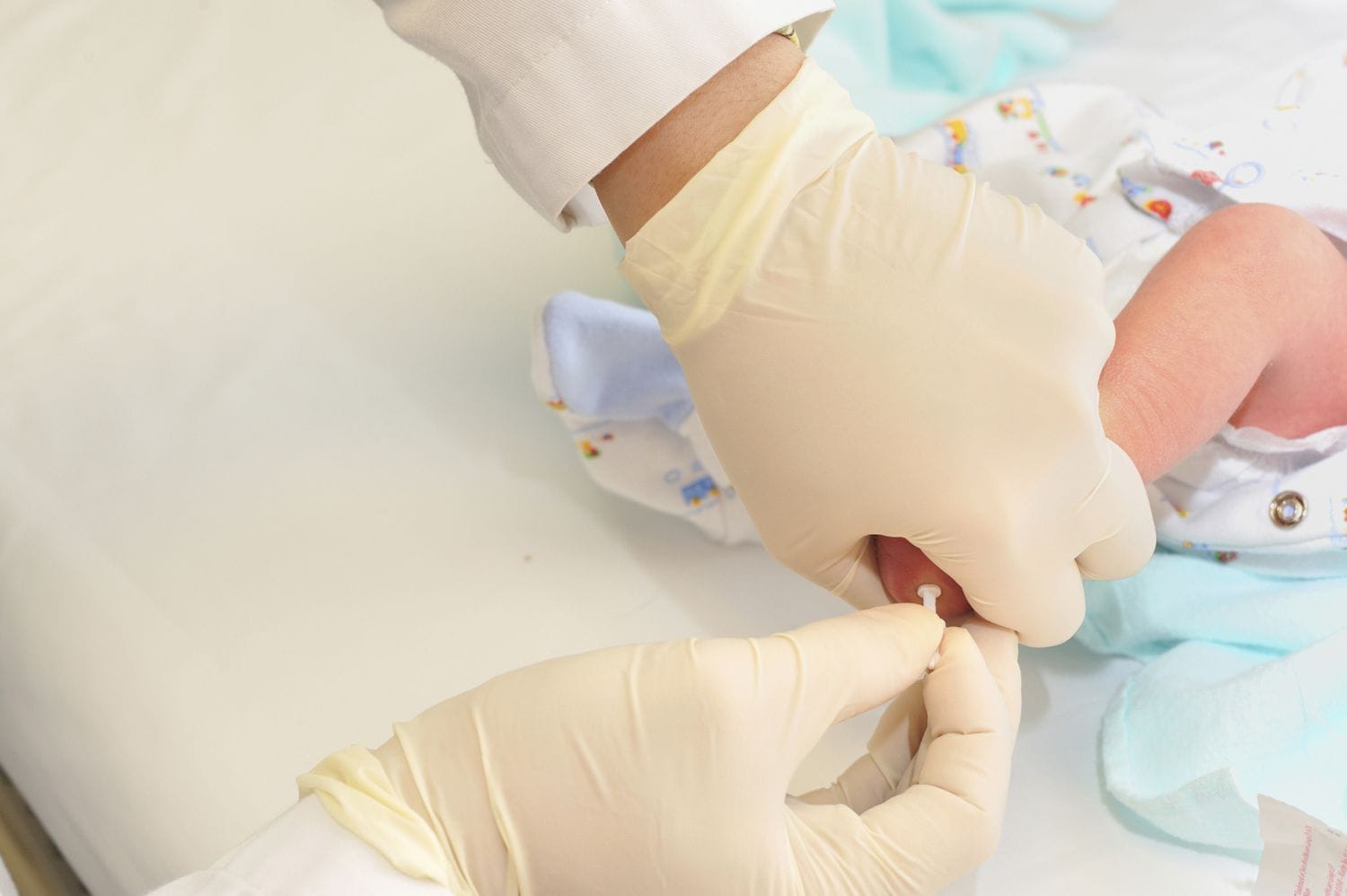Down syndrome is a genetic disorder caused when abnormal cell division results in an extra full or partial copy of chromosome 21. This extra genetic material causes the developmental changes and physical features of Down syndrome.
Down syndrome varies in severity among individuals, causing lifelong intellectual disability and developmental delays. It’s the most common genetic chromosomal disorder and cause of learning disabilities in children. In the United States, Down syndrome occurs in 1 of every 800 infants with many as 6,000 children born with Down syndrome each year. It is estimated that about 85% of infants with Down syndrome survive one year and 50% of those will live longer than 50 years. According to the National Down Syndrome Society, there are more than 350,000 people living with Down syndrome in the United States.
A better understanding of Down syndrome and early interventions can greatly increase the quality of life for children and adults with this disorder and help them live fulfilling lives.
What causes Down Syndrome?
Down syndrome can be caused by one of three types of abnormal cell division involving chromosome 21.
The three genetic variations include:
- Trisomy 21– More than 90% of Down syndrome cases are caused by trisomy 21. An extra chromosome (chromosome 21) originates in the development of either the sperm or the egg. When the egg and the sperm unite to form the fertilized egg, three (rather than two) chromosomes 21 are present. As the cells divide the extra chromosome is repeated in every cell.
- Mosaic Trisomy 21 – This is a rare form (less than 2% of cases) of Down syndrome. While similar to simple trisomy 21, the difference is that the extra chromosome 21 is present in some, but not all cells, of the individual. This type of Down syndrome is caused by abnormal cell division after fertilization. The name comes from a random order of normal and abnormal cells (a mosaic). In cellular mosaicism, the mixture can be seen in different cells of the same type; while with tissue mosaicism, one set of cells may have normal chromosomes and another type may have trisomy 21.
- Translocation Trisomy 21-Sometimes (in 3-4% of cases) part of chromosome 21 becomes attached (translocated) to another chromosome (usually the 13th, 14th or 15th chromosome) before or at conception. The carrier (the one having the translocated chromosome) will have 45 chromosomes instead of 46 but they will have all the genetic material of a person with 46 chromosomes. This is because the extra chromosome 21 material is located on a different chromosome (the translocated one). A carrier will have the extra material but will have only one chromosome 21. The carrier will not exhibit any of the symptoms of Down syndrome because they have the correct amount of genetic material.
For couples who have had one child with Down syndrome due to translocation trisomy 21, there may be an increased likelihood of Down syndrome in future pregnancies. This is because one of the parents may be a balanced carrier of the translocation.
The chance of passing the translocation depends on the sex of the parent who carries the rearranged chromosome 21. If the father is the carrier, the risk is about 3 percent, with the mother as the carrier, the risk is about 12 percent.
In all cases of Down syndrome, but especially in cases with translocation trisomy 21, it is important for the parents to have genetic counseling in order to determine their risk. There are no known behavioral or environmental causes of Down syndrome.
What is the Risk for Down Syndrome?
Some parents have a greater risk of having a baby with Down syndrome, including:
Maternal Age
As a woman’s eggs age, there is a higher risk of the chromosomes dividing incorrectly. Therefore the risk of Down syndrome increases with a woman’s age.
| Mother’s age | Chances of having a child with Down syndrome |
|---|---|
| 20 | 1 in 1,600 |
| 25 | 1 in 1,300 |
| 30 | 1 in 1,000 |
| 35 | 1 in 365 |
| 40 | 1 in 90 |
| 45 | 1 in 30 |
Previous child with Down syndrome
Generally, couples who have had one child with Down syndrome have a slightly increased risk (about 1%) of having a second child with Down syndrome.
A carrier parent
Parents who are carriers of the genetic translocation for Down syndrome have an increased risk depending on the type of translocation. Therefore, prenatal screening and genetic counseling are important. People with Down syndrome rarely reproduce. Fifteen to thirty percent of women with trisomy 21 are fertile and they have about a 50% risk of having a child with Down syndrome.
There is no evidence of a man with Down syndrome fathering a child. While the incidence of births of children with Down syndrome increases with maternal age, more children are born to women under the age of 35 due to higher fertility rates. Eighty percent of children with Down syndrome are born to women under the age of 35 years.
What is the difference between a Screening Test and a Diagnostic Test?
A screening test will help identify the possibility of Down syndrome. Screening tests do not provide conclusive answers, but rather, they provide an indication of the likelihood of the baby having Down syndrome. An abnormal test result does not mean that your baby has Down syndrome.
The goal with a screening test is to estimate the risk of the baby having Down syndrome. If the screening test is positive and the risk for Down syndrome exists, further testing may be recommended. Diagnostic tests can identify Down syndrome before the baby is born.
In the January issue of Obstetrics & Gynecology, the American College of Obstetricians and Gynecologists released guidelines recommending screening for Down syndrome to all pregnant women during their first trimester.
Diagnostic tests tend to be more expensive and have a degree of risk; screening tests are quick and easy to do. However, screening tests have a greater chance of being wrong; there are “false-positive” (test indicates the baby has the condition when the baby really does not) and “false-negatives” (baby has the condition but the test indicates they do not).
Screening and Diagnosis
Screening Tests During Pregnancy
Various screening tests can help identify the possibility of Down syndrome. These screening tests do not provide conclusive answers but provide an indication of the likelihood of the baby having Down syndrome.
The most common prenatal screening tests include:
- Ultrasound
- Blood tests – The results of the ultrasound are paired with blood tests.
- First Trimester Screen – This is a two-step screening. The maternal blood is tested for two normal first-trimester proteins. Then, an ultrasound is used to look at the nuchal translucency region under the skin behind the baby’s neck. This test is done between the 11th and 14th week of pregnancy.
- Quad Marker Screen – Maternal blood is tested for four substances that normally come from a baby’s blood, brain, spinal fluid, and amniotic fluid. This test is done between the 15th and 20th weeks of pregnancy.
- Triple Screen – During the 16th and 18th week of pregnancy a blood test can be performed which measures the quantities of three substances: Alpha-fetoprotein (AFP) which is produced by the fetus, human chorionic gonadotropin (hCG), and unconjugated estriol which is produced by the placenta. In determining the results of the test, health care providers take into account the mother’s age, weight, and ethnicity.
Diagnostic Tests During Pregnancy
If the screening tests are positive or high risk for Down syndrome exists, further testing might be needed.
Diagnostic tests that can identify Down syndrome include:
- Amniocentesis – performed after week 15.
- Chorionic villus sampling (CVS) – performed between the 9th and 14th week.
- Percutaneous umbilical blood sampling (PUBS) – performed after week 18.
Diagnostic Tests for Newborns
After birth, the initial diagnosis is usually based on the baby’s appearance. If some or all of the characteristic Down syndrome features are present, the health care provider will order a chromosomal karyotype test to be done. If there is an extra chromosome 21 present, the diagnosis is Down syndrome.
What are the reasons to test or not test?
The reasons to test or not test vary from person to person and couple to couple.
Performing the tests and confirming the diagnosis provides you with certain opportunities:
- Begin planning for a child with special needs
- Start addressing anticipated lifestyle changes
- Identify support groups and resources
Some individuals or couples may elect not to pursue testing or additional testing for various reasons:
- They are comfortable with the results no matter what the outcome is
- Because of personal, moral, or religious reasons, the decision about carrying the child to term is not an option
- Risk of harming the developing baby
It is important to discuss the risks and benefits of testing thoroughly with your health care provider. Your health care provider will help you decide if the benefits from the results could outweigh any risks from the procedure.
Signs and Symptoms of Down Syndrome
Symptoms of Down syndrome can range from mild to severe. Mental and physical developments are usually slower in people with Down syndrome than for those without the condition. Infants born with Down syndrome may be of average size, but grow slowly and remain smaller than other children of the same age.
Some common physical signs of Down syndrome include:
- Flat face with an upward slant to the eyes
- Short neck
- Abnormally shaped or small ears
- Protruding tongue
- Small head
- Deep crease in the palm of the hand with relatively short fingers
- White spots in the iris of the eye
- Poor muscle tone, loose ligaments, excessive flexibility
- Small hands and feet
There are a variety of health conditions frequently found in those with Down syndrome which include:
- Congenital heart disease
- Hearing problems
- Intestinal problems, such as blocked small bowel or esophagus
- Celiac disease
- Eye problems, such as cataracts
- Thyroid dysfunctions
- Skeletal problems
- Dementia – similar to Alzheimer’s
- Infectious diseases – because of abnormalities to their immune systems, children are at increased risk of developing autoimmune disorders, some forms of cancer, and infectious diseases, such as pneumonia.
Treatment
There is no medical cure for Down syndrome. However, children with Down syndrome would benefit from early medical assistance and developmental interventions beginning during infancy. Children with Down syndrome may benefit from speech therapy, physical therapy, and occupational therapy. They may receive special education and assistance in school.
Prognosis
The general health and quality of life for people with Down syndrome has improved drastically in recent years. Many adult patients are healthier, live longer, and participate more actively in society due to early intervention and therapy.
Coping Skills
Discovering that your child has Down syndrome can be scary and difficult. You may not know what to expect and may worry about caring for a child with disabilities.
Three actions can be helpful in coping with this new situation:
- Assemble a team of professionals –Find a team of health care providers, teachers, and therapists that you trust to work with you in providing the best care for your child.
- Seek out other families – Support from those who have had similar experiences with a Down syndrome child can be very beneficial. These support groups can be found through local hospitals, physicians, schools and the Internet.
- Don’t believe the myths about Down syndrome – Immense strides have been made in recent years with people who have Down syndrome. Most live with their families, go to mainstream schools and have various jobs as adults. People with Down syndrome can have fulfilling lives.
Want to Know More?
The following organizations can provide additional information:
March of Dimes
https://www.marchofdimes.org
National Down Syndrome Congress
https://www.ndsccenter.org
National Down Syndrome Society
https://www.ndss.org
Compiled using information from the following sources:
- eMedicine Health, https://www.emedicinehealth.com
- Family Doctor, https://familydoctor.org
- March of Dimes, https://marchofdimes.org
- Mayo Clinic, https://www.mayoclinic.com
- National Down Syndrome Society, https://ndss.org
- National Institute of Child Health & Human Development, https://nichd.nih.gov






